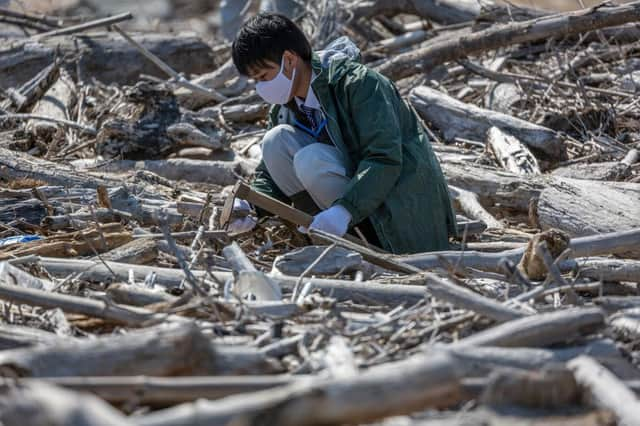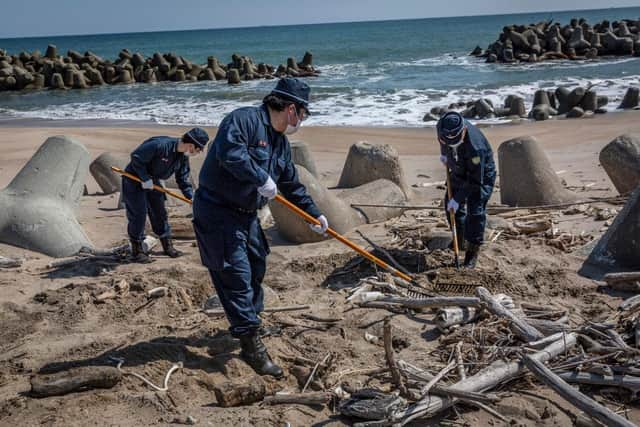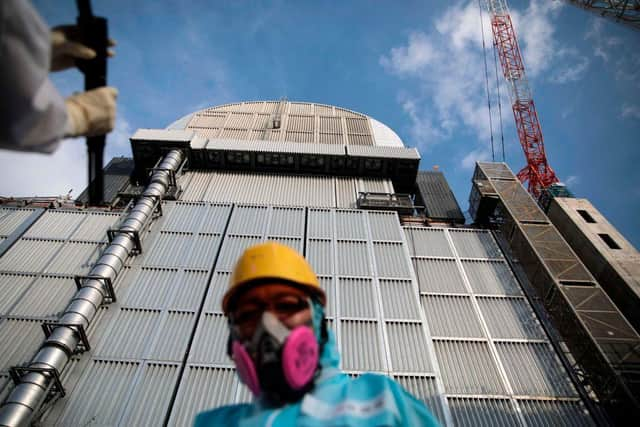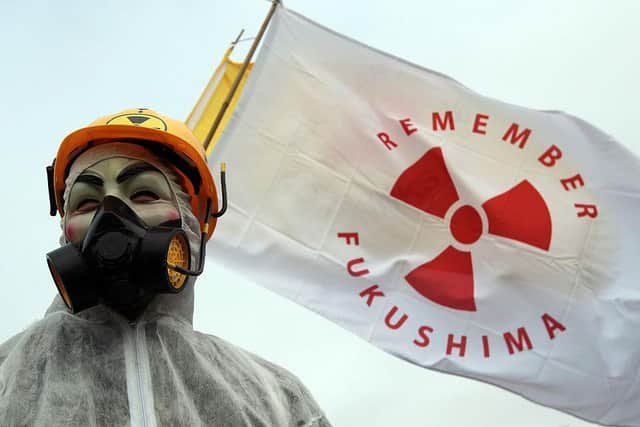Japan tsunami: 2011 Fukushima Daiichi nuclear disaster and earthquake explained – is the power plant safe today?


10 years have passed since the earthquake that sent shock waves throughout the world and triggered the infamous Fukushima Daiichi nuclear disaster.
On 11 March 2011, the Great East Japan earthquake struck at a magnitude of 9.0 – the fourth most powerful earthquake in the world since modern record-keeping began.
Advertisement
Hide AdAdvertisement
Hide AdThe huge tremors off the east coast of Japan’s Oshika Peninsula (the spit of land that juts southeast into the Pacific Ocean from the country's main island) triggered powerful tsunami waves, estimated to have reached heights of over 40 metres.


These waves, travelling at speeds of up to 435 mph caused devastation for miles inland, and the combined forces of the earthquake and the tsunami are estimated to have killed nearly 20,000 people.
The disaster also caused level 7 meltdowns at three reactors in the Fukushima Daiichi Nuclear Power Plant complex, situated about 140 miles north of Tokyo.
Here is everything you need to know about it.


What happened?
Damage to the plant had already been caused by the massive earthquake, which sent its three nuclear reactors into automatic shut down as a safety measure.
But the reactors were not prepared for the tsunami waves that followed, and as the diesel generators and battery back-ups that were supposed to cool the reactor cores failed, temperatures began to rise uncontrollably.
Hydrogen gas was released, causing large explosions which sent all three reactors into meltdown, spewing radiation and forcing 150,000 people from their homes, many of whom will never return.


No-one was killed from the explosions themselves, but 35 people were injured and the incident sparked a major nuclear ordeal. The disaster was eventually classified at the same severity level as the 1986 explosion at Chernobyl.
Could the disaster have been prevented?
An official inquiry found that Tokyo Electric Power (Tepco) – the company running the station – had failed to plan for the very foreseeable dangers of earthquakes and tsunamis, and had no evacuation plan in place.
Advertisement
Hide AdAdvertisement
Hide AdAnd in 2012, a panel criticised the response of Tepco, regulators and then Prime Minister Naoto Kan, who had resigned the year before after criticism of his handling of the disaster.
“The Fukushima nuclear power plant accident was the result of collusion between the government, the regulators and Tepco, and the lack of governance by said parties,” the panel said.
Regulators had been reluctant to adopt global safety standards that could have helped prevent the disaster: "Across the board, the commission found ignorance and arrogance unforgivable for anyone or any organisation that deals with nuclear power,” said the panel.
It also found evidence that damage from the earthquake, and not just the ensuing tsunami, could not be ruled out as a cause of the incident in one of the world’s most quake-prone nations.
“We have proved it cannot be said that there would have been no crisis without the tsunami,” Katsuhiko Ishibashi, seismologist and panel member, said.
What is the area like today?
Many people still have an image of the negative situation of Fukushima Prefecture shortly after the region was hit by the disaster-caused nuclear plant accident.
This has hindered Fukushima's recovery and prevented various countries and regions from lifting import restrictions on agricultural and other products from Japan.
It took six years and a huge clean-up effort before most of the residents evacuated from the area were allowed to return, and today there remains a “core zone” which is still too dangerous for 50,000 inhabitants to be allowed back.
Advertisement
Hide AdAdvertisement
Hide AdThe mammoth clean-up operation is still ongoing, with a crew of over 5,000 people. Independent estimates put the final bill for the project at over £550 billion, and current predictions suggest it may be another 30 years before the site is fully cleaned up.
But recovery has been steadily progressing, and earlier this month the Reconstruction Agency – a government agency overseeing work on recovery from the Great East Japan Earthquake – opened the Fukushima Updates website.
The aim of the site is to accurately and clearly send out information in English regarding questions and concerns that people may have over the safety of Fukushima and Japan.
Intended as a forefront tool to disseminate the latest information on Fukushima, the site responds in a Q&A format to questions and concerns that people may have over the current situation of Fukushima, and the safety of Japanese food products.
What is the Fukushima plant like today?
Groundwater still seeps through the plant, picking up radioactivity from melted uranium fuel. Some of it is captured and stored in tanks, although they are expected to reach their capacity in 2022.
Some of it still makes it out to contaminate the Pacific.
In January it was announced that the UK and Japan are working together on developing new automated technologies to safely decommission old nuclear sites such as Fukushima as part of a £12 million partnership.
Long-reach robotic arms will be used at the Fukushima plant – many parts of which remain too radioactive for human workers – though even the specially created robots are frequently put out of action by the radiation.
How has the disaster changed energy policy?
Japan’s energy policy has changed direction in the years since the disaster, with a renewed focus on green and sustainable energies and a pause on many of the county’s plans to build more nuclear reactors.
Advertisement
Hide AdAdvertisement
Hide AdThe country is currently home to 42 operational reactors, though public concerns and required new safety measures mean that only nine of them were actually in use in 2020.
The effects of the disaster have been felt internationally too.
Outside of Japan, Taiwan, Belgium and Germany have accelerated their nuclear phase-out plans, and Italy has voted against new nuclear stations altogether.
George W Bush’s 2002 plan for 36 new nuclear plants in the US has resulted in just three, and the UK’s plans for six new plants will likely only deliver one.